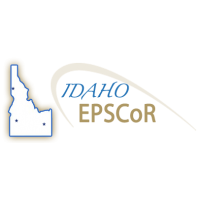We present a novel model development and evaluation framework, wherein we compare 26 models to predict upper distribution limits of trout in streams in Oregon using observational data collected in 2017. The models used machine learning, logistic regression, and a sophisticated nested spatial cross-validation routine to evaluate predictive performance while accounting for spatial autocorrelation. The model resulting in the best predictive performance, termed UPstream Regional LiDAR Model for Extent of Trout (UPRLIMET), is a two-stage model that uses a logistic regression algorithm calibrated to observations of Coastal Cutthroat Trout (Oncorhynchus clarkii clarkii) occurrence and variables representing hydro-topographic characteristics of the landscape. We predict trout presence along reaches throughout a stream network and include a stopping rule to identify a discrete upper limit point above which all stream reaches are classified as fishless. This data publication contains the geospatial data used for training, validation, and prediction by UPRLIMET (UPstream Regional LiDAR Model for Extent of Trout). Data are provided as two geodatabases with streamline (flowline) hydrography and include spatially explicit full-detail (predictions + covariates) prediction features separated by HUC12 watersheds and layers with pertinent prediction outputs merged into single spatial data layers for rapid rendering. Additionally, tabular data files are included that provide definitions of the covariates used in the model as well as the location and habitat barrier information for each stream and mainstem or tributary.
Data Use
License
Creative Commons Public Domain Dedication and Certification (CC-PDDC)
These data were collected using funding from the U.S. Government and can be used without additional permissions or fees. If you use these data in a publication, presentation, or other research product please use the following citation:
Burnett JD. Penaluna BE, Christiansen K, Arismendi I, Johnson SL, Griswold K, Holycross B, Kolstoe SH, Hirsch WR. 2023. UPstream Regional LiDAR Model for Extent of Trout (UPRLIMET) model training and prediction data [Dataset]. Fort Collins, CO: Forest Service Research Data Archive. https://doi.org/10.2737/RDS-2022-0087
Funding
USDA Forest Service, Pacific Northwest Research Station
Data and Resources
| Field | Value |
|---|---|
| Modified | 2023-09-07 |
| Release Date | 2023-06-28 |
| Publisher | |
| Identifier | 01f43796-2cbf-4877-94ae-46c75f26d716 |
| Spatial / Geographical Coverage Area | POLYGON ((-125.87966 40.98856, -125.87966 46.51502, -120.45955 46.51502, -120.45955 40.98856)) |
| Spatial / Geographical Coverage Location | western Oregon USA |
| Language | English (United States) |
| License | Creative Commons Public Domain Dedication and Certification |
| Author | |
| Contact Name | Brooke E. Penaluna |
| Contact Email | |
| Public Access Level | Public |
| DOI | 10.2737/RDS-2022-0087 |

